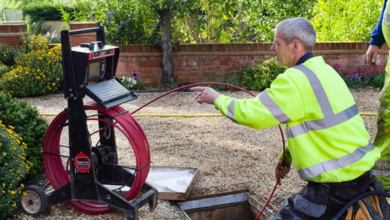How to Prevent Roof Damage from Ice Dams

Ice dams in Boston are a common winter problem for homeowners in colder climates, and they can cause significant damage to roofs and interiors. These ice formations occur when heat from the home escapes into the attic, melting snow on the roof. As the melted water runs down to the colder edges of the roof, it refreezes, creating a dam that prevents proper drainage. This can lead to water backing up under shingles, causing leaks, rot, and structural damage. Preventing ice dams is crucial for maintaining the integrity of your roof and avoiding costly repairs. We will explore practical strategies for preventing ice dams and protecting your home from potential damage.
Ensure Proper Attic Insulation
One of the most effective ways to prevent ice dams is by ensuring that your attic is properly insulated. Adequate insulation helps keep the attic space cooler by minimizing heat transfer from the living areas below. This reduces the likelihood of snow melting on the roof and forming ice dams at the edges. To achieve this, assess the insulation levels in your attic and add more if necessary.
Insulation should be evenly distributed and cover all areas of the attic floor. Common types of insulation include fiberglass batts, blown-in cellulose, and spray foam. Each type has its advantages, so it’s important to choose one that suits your budget and needs. Additionally, seal any gaps or openings that may allow warm air to escape into the attic. Proper insulation prevents ice dams and improves energy efficiency, reducing heating costs during the winter months.
Read also: Common Roofing Problems and Their Solutions
Enhance Ventilation
In addition to insulation, proper attic ventilation is critical in preventing ice dams. Ventilation helps maintain a consistent temperature in the attic by allowing cold air to circulate and expel warm air. This balance prevents the buildup of heat that can lead to snow melting and refreezing at the roof edges.
Ensure your attic has sufficient intake and exhaust vents to facilitate proper airflow. Common ventilation options include soffit vents, ridge vents, and gable vents. These should be installed to promote cross-ventilation, allowing cold air to enter the soffits and exit through the ridge or roof vents. Regularly inspect and clean the vents to ensure they are not obstructed by debris or insulation. By enhancing attic ventilation, you can effectively prevent the formation of ice dams and maintain the health of your roof.
Install Ice and Water Shield
Installing an ice and water shield is an additional measure to protect your roof from the potential damage caused by ice dams. This self-adhesive membrane is applied directly to the roof deck under the shingles, creating a watertight barrier that prevents water from seeping into the home if an ice dam forms. The shield is typically installed along the eaves, valleys, and other vulnerable areas where ice dams are most likely to develop.
While ice and water shields are often used during new roof installations or re-roofing projects, they can also be retrofitted to existing roofs. It is important to ensure the shield is properly installed and extends at least three feet from the eaves to provide adequate protection. By incorporating an ice and water shield into your roofing system, you can minimize the risk of water infiltration and protect your home from costly damage.
Remove Snow from the Roof
Regularly removing snow from your roof is a proactive step in preventing ice dams. Keeping the roof clear of snow reduces the amount of melted water that can refreeze at the edges and form dams. This can be particularly important after heavy snowfall or during fluctuating temperatures that can accelerate the melting and freezing cycle.
Use a roof rake with an extended handle to safely remove snow from the ground without climbing onto the roof. Start at the eaves and work your way up, careful not to damage the shingles. It is important to leave a thin layer of snow on the roof to prevent damage to the roofing materials. Avoid using sharp tools or applying excessive force, which can harm the shingles and compromise the roof’s integrity. Regularly removing snow can prevent ice dams and maintain a healthy roof throughout the winter.
Address Heat Sources in the Attic
Addressing heat sources in the attic is another important step in preventing ice dams. Heat-generating appliances, such as furnaces, water heaters, and ductwork, can contribute to elevated temperatures in the attic, increasing the risk of snow melting on the roof. To minimize this risk, consider insulating these appliances and ensuring that ductwork is properly sealed and insulated.
Also, the lighting and electrical fixtures in the attic, as these can emit heat, should be evaluated. Replace incandescent bulbs with energy-efficient LED bulbs that produce less heat, and ensure that fixtures are properly insulated to prevent heat escape. By addressing these heat sources, you can maintain a cooler attic environment and reduce the likelihood of ice dam formation.
Conclusion
Preventing ice dams requires a combination of insulation, ventilation, maintenance, and proactive measures. Homeowners can effectively protect their roofs from the damaging effects of ice dams by ensuring proper attic insulation and ventilation, installing an ice and water shield, regularly removing snow, and addressing heat sources. Taking these steps prevents potential water damage and costly repairs and contributes to the overall efficiency and longevity of your roofing system. By being proactive and vigilant, you can safeguard your home and enjoy a worry-free winter season.





